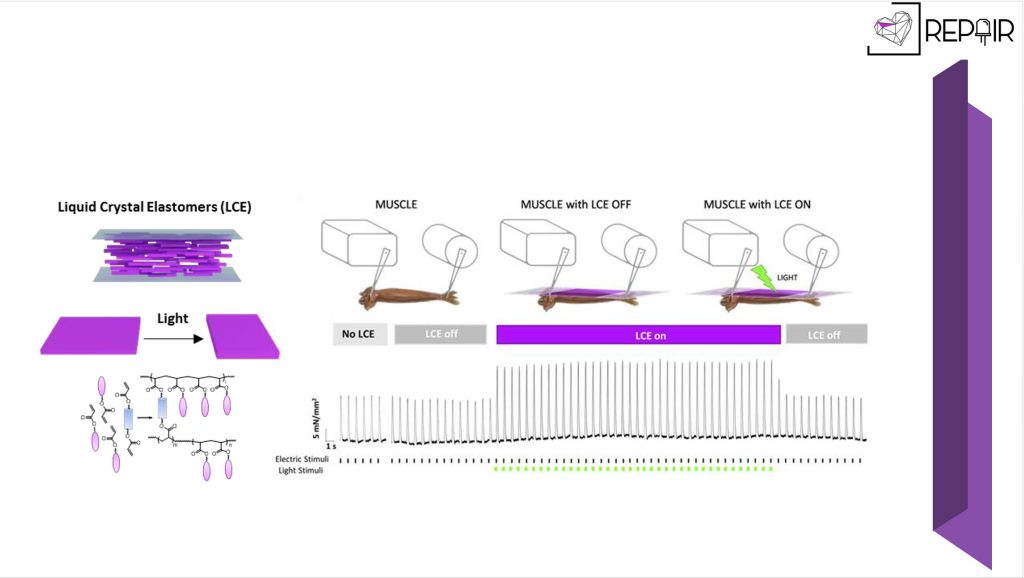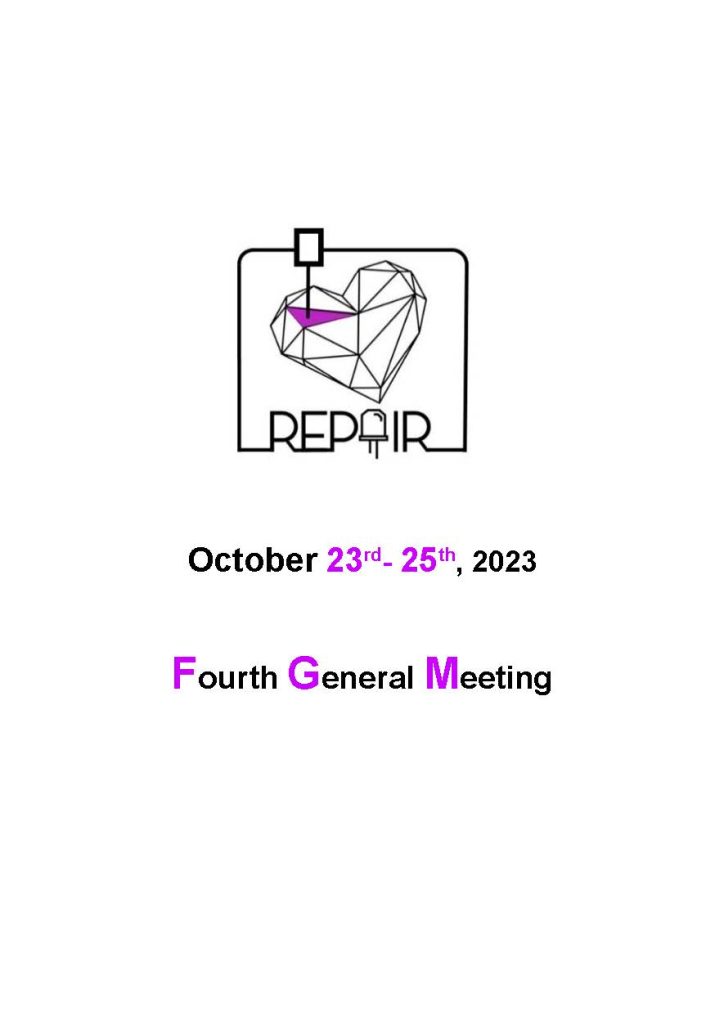
RESTORING CARDIAC MECHANICAL FUNCTION BY POLYMERIC ARTIFICIAL MUSCULAR TISSUE
Heart Failure (HF) and Atrial Fibrillation (AF) are both associated with impairment of cardiac mechanical function. To assist ventricular contractility in HF, left ventricular assist devices (LVADs) have been developed and demonstrated able to reduce mortality in patients awaiting transplantation, but enormous disadvantages largely limit their long-term use. In parallel, promising devices to mechanically assist atrial contractile function have been successfully tested in large animals but never reached the clinical use.
Our revolutionary idea to solve these clinical challenges is to exploit smart materials to support or restore the cardiac mechanical function. Among smart materials, liquid crystalline elastomers (LCEs) are able to respond to external stimuli in a reversible manner to generate movement or tension.
The REPAIR Consortium has recently developed a novel LCE-based artificial muscle that under external light stimulation is able to enhance cardiac muscle contraction. These results pave the way for the development of a novel generation of cardiac assist devices. We will first develop a mechanical performant and energetically efficient LCE material that, integrated with light sources (μLED array), will result in fundamental biomimetic contractile units to be structured in a suturable, remote controlled contractile tissue.


The LCE-μLEDs contractile tissue will be exploited to develop a new generation of cardiac assist devices (e.g. ventriculoplasty patches, aortic rings for diastolic counterpulsation and epicardial bundles for atrial contraction assistance) and test the effects of their acute implantation in large mammals (open-chest sacrifice experiments) and human explanted hearts. Among LCE-device features: they will be self- contracting, low weight, associated with low thromboembolic risk, and most importantly, they will rely on a control unit that can modulate the exerted force providing the fist “tunable” cardiac assist device ever developed.

WHAT’S NEW?

RESTORING CARDIAC MECHANICAL FUNCTION BY POLYMERIC ARTIFICIAL MUSCULAR TISSUE
Heart Failure (HF) and Atrial Fibrillation (AF) are both associated with impairment of cardiac mechanical function. To assist ventricular contractility in HF, left ventricular assist devices (LVADs) have been developed and demonstrated able to reduce mortality in patients awaiting transplantation, but enormous disadvantages largely limit their long-term use. In parallel, promising devices to mechanically assist atrial contractile function have been successfully tested in large animals but never reached the clinical use.
Our revolutionary idea to solve these clinical challenges is to exploit smart materials to support or restore the cardiac mechanical function. Among smart materials, liquid crystalline elastomers (LCEs) are able to respond to external stimuli in a reversible manner to generate movement or tension.

The REPAIR Consortium has recently developed a novel LCE-based artificial muscle that under external light stimulation is able to enhance cardiac muscle contraction. These results pave the way for the development of a novel generation of cardiac assist devices. We will first develop a mechanical performant and energetically efficient LCE material that, integrated with light sources (μLED array), will result in fundamental biomimetic contractile units to be structured in a suturable, remote controlled contractile tissue.
The LCE-μLEDs contractile tissue will be exploited to develop a new generation of cardiac assist devices (e.g. ventriculoplasty patches, aortic rings for diastolic counterpulsation and epicardial bundles for atrial contraction assistance) and test the effects of their acute implantation in large mammals (open-chest sacrifice experiments) and human explanted hearts. Among LCE-device features: they will be self- contracting, low weight, associated with low thromboembolic risk, and most importantly, they will rely on a control unit that can modulate the exerted force providing the fist “tunable” cardiac assist device ever developed.
Discover the Consortium
The Consortium counts on renowned research leaders in their field with international networking and project and enterprises with unique background reputation and a solid impact among researchers and professionals.






